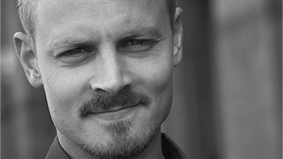Giles makes the point that in these tough times companies have two choices – to innovate their way out of recession, or to retrench their way through it. He’s right of-course, and I know which way I’d rather go.
Image courtesy
It almost goes without saying that innovation can not only get you through a recession, it can see you come out the other side in a stronger competitive position, like the Satir change model that Jonathan blogged about suggests:
Unlike most of the people I work with, I’ve worked in a recession. In fact I came out of education right into the middle of one and I remember the bleakness of the graduate recruitment market and the apparent lack of opportunity at the time. But you make your own opportunity, and that’s what we call innovation, and there’s never been a better time to remember that.
But it’s not quite so simple. The real question for businesses of-course is what type of innovation – product innovation is one thing, but the real game-changers come from stuff that changes the rules of a market. Stuff that changes the business model. Most business model innovations come from newcomers to an industry. Most established competitors find this type of innovation difficult because it often doesn’t make economic sense for them. They’re too focused on reaching next quarter’s number.
This is a huge challenge. For one thing the numbers are stacked – for every established business trying to develop a new model there might be hundreds of entrepreneurs trying to do the same thing. And even if you can harvest the good ideas from your organisation, it’s tricky to grow them in an environment where you are trying to accomodate two divergent and potentially conflicting games that operate to very different rules. So ideas are one thing, action quite another.
In Game Changing Strategies, Constantinos Markides talks about this in terms of the need to create what he calls a "positive crisis". It’s not enough to actively and continuously question what you do, he says, because even when people intellectually accept the logic of doing so, they very rarely act on it – so you have to generate action that breaks the inertia.
As Seth Godin talks about in Tribes, the real difference in today’s environment is leverage. One person has the leverage to change everything. And whilst this might be the worst enemy you ever had, it could also be your best friend. The ability to connect people to form a Tribe has never been greater, and leaders can come from anywhere. But maybe the leaders of the future are sat within your organisation. And maybe you are too focused on management to enable leadership, because you know what? There’s a big difference:
"Management is about manipulating resources to get a known job done…leadership is about creating change you can believe in…Leaders have followers. Managers have employees" Seth Godin
Everyone sat inside those organisations has the leverage to transform the model of the business they are in. When they try, the temptation is for the business to wrap such ideas in short-term ROI, judge it by existing rules, implement it through an existing structure, make it fit an existing process. You don’t manage innovation. You need to get the organisation, with all that process, all that hierarchy, all those assumptions, out of the way. In other words, in order to create a purple cow, you have to get rid of a few sacred ones first.
Image source: H4NUM4N
Original Post: http://neilperkin.typepad.com/only_dead_fish/2008/11/image-courtesy.html




